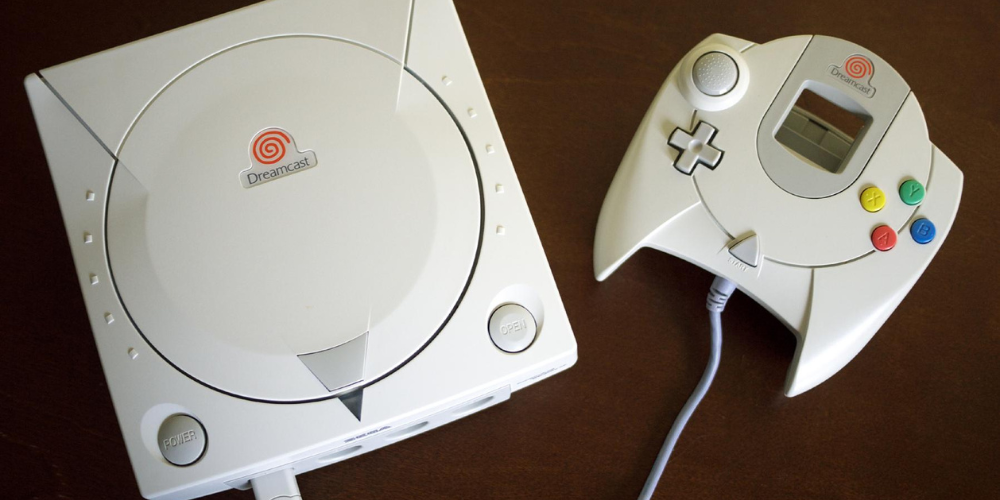Five endearing gaming system underachievers
- Jul 07, 2024
- 0

Not all platform system debuts have rolled out flawlessly through the years. Here are five gaming systems that may not have hit the heights of sales success, yet they remain remarkable nonetheless.
Sega Master System (1985)
When reflecting on the 8-bit era of gaming, the Nintendo Entertainment System (NES) often dominates the conversation, not because it was the premiere or sole introduction to gaming, but due to its collection of engaging games nestled within an impeccably crafted machine with an ingenious controller setup. Nevertheless, Sega introduced a challenger: the more robust Master System (which debuted in Europe in 1987) along with a slew of impressive titles.
Unfortunately, Nintendo's shrewd business agreements restricted game developers from collaborating with its rivals, impacting the Master System's market presence. Sega's knack for innovation was evident in the Master System's unique add-ons, but it was shortly overshadowed by the arrival of the Sega Mega Drive in Europe just three years later. Ultimately, the Master System's global sales totaled around 12 million units.
Atari Lynx (1989)
Just prior to the Game Boy's launch, which revolutionized handheld gaming, Atari had released the Lynx. In stark contrast to the Game Boy's monochromatic display, the Lynx boasted a color palette of 4096 hues, providing a gaming experience that outshone many contemporary home consoles. The cartridges were cutting-edge, and I recall the sheer amazement when I first saw one. My excitement was palpable when I brought one along on a school journey. Despite its voracious appetite for batteries, which could be satiated with an included adapter, the Lynx struggled to build a substantial game library. Eventually, the Atari Lynx managed to sell only two million units despite its groundbreaking ambition for its time.
PlayStation Vita (2012)
Do you recall this device? After the PlayStation Portable's (PSP) decline, few expected Sony to delve back into the mobile gaming market, but then came the advent of the PlayStation Vita—a technological marvel that radiated a blend of high ambition and opulence. Its thoughtful design seamlessly integrates hardware and software with an innovative rear touch surface that opens up fresh game interactions. Nonetheless, Sony's strategy faltered as they produced lackluster portable iterations of flagship console franchises. Eventually, the Vita became reliant on independent titles until Sony decided to discontinue it. The timing of the Nintendo Switch's debut was the final curtain call for the Vita, which sold just shy of 16 million units.
Neo Geo (1990)
Upon its release in 1990, the Neo Geo was essentially an arcade system brought into the home. Notably, SNK's home version, the AES, was leagues ahead of any competitors in terms of performance. However, its steep price point initially pegged it as a rental-only proposition. SNK later opted to sell the console and games directly, with individual game prices that would equate to about $200 in today's terms. While these prices naturally limited its reach, the Neo Geo gained a devoted following and boasted a home sales figure of one million units, with game development extending all the way to 2003. The Neo Geo today still conveys a sense of high-end gaming, where playing titles like Art of Fighting, Magician Lord, or Metal Slug 3 evokes a profound gaming delight.
Sega Dreamcast (1998)
The Dreamcast holds a special place in my heart and might just be my all-time favorite gaming console, despite being a market underperformer that led Sega to pivot exclusively to game development. I first experienced the Dreamcast at a colleague's house before it became available in Scandinavia. Thanks to robust Japanese connections, I secured a unit for myself and relished its offerings.
It was not only visually remarkable but also boasted unparalleled design features, including a comfortable controller, varied accessories, and arcade-level games. Integrated internet capability and an innovative visual memory system that doubled as a controller screen (such as showing health stats in Resident Evil - Code: Veronica) were just a part of its allure. The advent of Sony's PlayStation 2, the charming Nintendo GameCube, and Microsoft's entry into the gaming fray with the Xbox led to the Dreamcast's decline. With a wistful legacy, the Dreamcast concluded its journey with nine million units sold.
